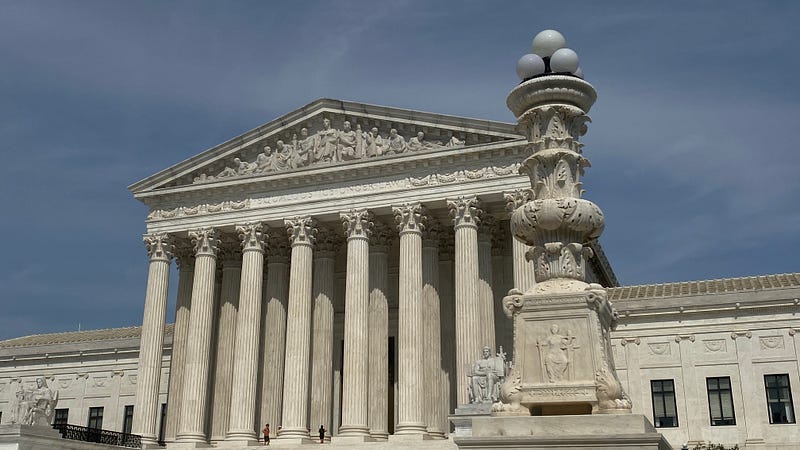A Discussion of Oliver DeMille’s 1913 Chapter 5 “World-Shifting Event #4: United States v. Butler in 1936”
The first three world-shifting events that weakened federalism and expanded the power of the federal government occurred in 1913, but Oliver DeMille says the 1936 case United States v. Butler structurally altered how our government works.
He starts the chapter by giving us some history of the Supreme Court and how it got the role we know today. I often hear people say something like how wrong it is to have our world shaped by nine people in robes, and the framers would have agreed.
That was not how things were designed.
The U.S. Constitution in 1789 had designed checks and balances among all the players because the framers knew people would aggregate power to themselves or their branch of the government if nothing stopped them.
They also knew that there would be legal disputes requiring a judiciary to make rulings to settle issues. The original role of the Supreme Court in the Constitution
…gave the court the final say in determining the winner and loser in any given case but said nothing about the power to use a case as decisive precedent for any other case — and certainly granted the judiciary no power over any other branch of government. (p. 64)
Only 14 years after the Constitution was ratified, the Supreme Court used the 1803 case Marbury v Madison to enlarge its role. In the opinion written by Chief Justice John Marshall, he declared
…the Supreme Court was the exclusive and final arbiter of what was constitutional and wat was not, and furthermore, that its decisions were binding on all branches of government. (p. 64)
This fundamentally changed the power among the three branches which were designed to be equal but now put the Court over the other two.
Thomas Jefferson who was president at the time vehemently disagreed with this decision and wanted it “denounced as not law.” (p. 65)
He may not have liked it by DeMille points out he was not surprised. Jefferson had long thought
…that the germ of dissolution of our federal government is in the constitution of the federal judiciary: an irresponsible body…working like gravity by night and by day, gaining a little today and a little tomorrow, and advancing its noiseless steps like a thief…until all shall be usurped from the States, and the government of all be consolidated into one. (p. 66)
Marbury v. Madison was the first step in this prediction, but DeMille mentions two other cases that moved us down the dark road Jefferson feared.
Just a little over a decade after Marbury, the Court ruled in Martin v. Hunter Lessee in 1816 that it had the role of interpreting all federal law and those state supreme court rulings were subordinate to the U.S. Supreme Court. (p. 67)
Then in McCulloch v. Maryland in 1819 they expanded their powers further, liberating themselves from following the Constitution word for word.
…according to the court’s decision in this case, the court gets to decide what its own powers are, regardless of what the Constitution or anyone else says on the subject, and it also gets to decide the powers of the other branches of government. Again, this is in direct contrast to the original intent of the framers. (p. 67)
Jefferson’s fears of this “irresponsible body” usurping power from the other parts of the government came true. With these three cases, the Supreme Court had made itself the final word on what the Constitution meant and had made itself above all other parts of the government.
After the Marbury case, Jefferson wrote that they had failed to foresee a need for an amendment at the time of ratification of the Constitution that would have put a check on the Supreme Court.
“I deem it indispensable to the continuance of this government that they [the opinions of the Supreme Court] should be submitted to some practical and impartial control; and this, to be impartial, must be compounded of a mixture of state and federal authorities…” (p. 74)
No such amendment was included in the original Constitution so the usurpation of powers in Marbury stood without objection.
The Butler Case
The 1913 turning points included expanding federal power to tax the people directly.
It also made senators directly elected by the people instead of by the state governments, weakening the Senate’s allegiance to the states who usually wanted to stop federal spending.
And with the creation of the Federal Reserve, the government could more easily print and borrow money.
But even after 1913, the federal government was constitutionally limited in how much it could spend. It could, after 1913, increase taxes and debt and print money at will. But it still could not spend money on any program that wasn’t allowed under the Constitution. (p. 69)
That is, the Constitution limited Congress to spending only on the twenty powers it enumerated.

There was a clause in that section that says Congress could spend as necessary for the “general welfare” of the nation. When written, general welfare meant spending on things that benefitted all citizens as opposed to private or special welfare which would mean spending on things that only benefitted a specific group. (p. 70)
This is made clear in Federalist Paper 41 where James Madison wrote that general welfare does not mean Congress can spend on anything beyond the listed twenty powers. (p. 70)
The Butler decision changed that. It declared Congress was not limited by “the direct grants of legislative power found in the Constitution.” (p. 70) As DeMille sums it up,
In other words, Congress can do anything it wants — even if it is not “constitutional” — as long as the court upholds it. Indeed, if the court calls it “constitutional,” it is, regardless of what the actual document says. (p. 72)
The three dissenting judges realized what a monumental alteration of the system this was and called it “a tortured construction of the Constitution.” (p. 72)
The Butler case specifically dealt with an agricultural program that taxed some commodities and used the proceeds to pay farmers to grow less in one of President FDR’s ideas of reducing supply to raise prices and fight deflation to cure the Great Depression.
But the decision went far beyond that specific issue and redefined the meaning of “general welfare” to something the framers never meant. Instead, the Court interpreted general welfare to now mean anything Congress wants to spend money on to benefit the nation as they define it.
The Consequences of the Butler Case
DeMille states that of the thirteen presidents we had in the years leading up to 1936:
- four increased U.S. per capita spending over their predecessor
- two kept spending essentially the same as their predecessor
- seven reduced spending compared to their predecessor (p. 75)
In contrast, the twelve presidents we had had since 1936 and up to 2012 when he was writing:
- twelve “drastically increased” per capita spending over their predecessor
- President Truman was the only one to reduce spending, but that was large because it was the first peacetime era after WWII
This is what DeMille means about the four World-Shifting events. The three 1913 changes plus the Butler ruling structurally changed our system from its original design.
Clearly, the systemic change caused by the redefining of “general welfare” in United States v. Butler created lasting structural alterations to how the United States government does its business. Indeed, after the Butler case, “the federal budget jumped from six billion to six hundred billion in one generation.” It has consistently increased ever since. (p. 75)
However, DeMille offers a bit of hope. We got to this point today due to “a few small changes” pushed by “a few knowing and committed people.” Thus, he says, such changes could happen again in a positive direction. The remaining chapters turn to what could be done to fix what was broken.
Reference: DeMille, Oliver, 2012. “World-Shifting Event #4: United States v. Butler in 1936” Chapter 5 of 1913, Obstacles Press, Inc., Flint, Michigan.




